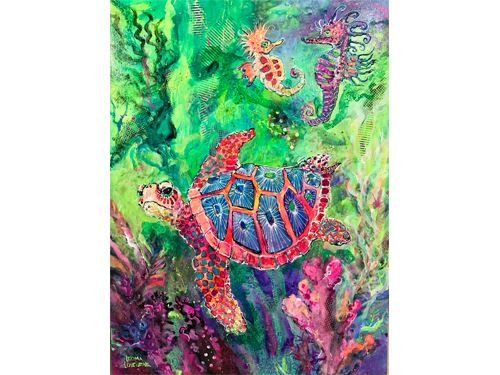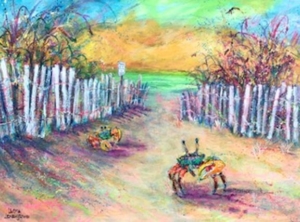 While I was in Alaska, I had the pleasure of catching a rare King Salmon and eating crab from the cold north Pacific waters lapping the shores of our 49th state and the Canadian northwest. But let me tell you about a delicacy from the waters of the Gulf of Mexico that’s just as delicious. It’s stone crab claws, and they’re so popular that I included a couple of these guys in one of the 16 paintings in my Florida Floats My Boat series.
While I was in Alaska, I had the pleasure of catching a rare King Salmon and eating crab from the cold north Pacific waters lapping the shores of our 49th state and the Canadian northwest. But let me tell you about a delicacy from the waters of the Gulf of Mexico that’s just as delicious. It’s stone crab claws, and they’re so popular that I included a couple of these guys in one of the 16 paintings in my Florida Floats My Boat series.
The onset of winter in Florida not only brings wonderfully 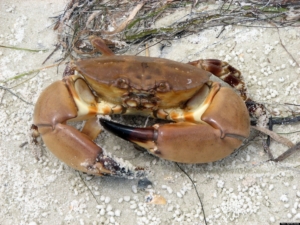 mild sunny weather but also the eagerly anticipated annual harvest of stone crab claws. But here’s the best part. If stone crabs are declawed properly, they’ll grow back! So not only isn’t it necessary to kill the crab in order to eat the claws, it’s counter-productive. It would be like killing an orange tree in order to harvest the fruit.
mild sunny weather but also the eagerly anticipated annual harvest of stone crab claws. But here’s the best part. If stone crabs are declawed properly, they’ll grow back! So not only isn’t it necessary to kill the crab in order to eat the claws, it’s counter-productive. It would be like killing an orange tree in order to harvest the fruit.
Each time a crab molts it has the ability to regenerate the lost appendage. Regeneration in adult crabs takes one year due to the seasonal molting of adult females in fall and adult 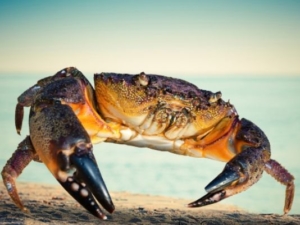 males in winter. The regenerated claws start out smaller than the original and will continue to grow through subsequent molts. After three molts (three years in adult crabs) a claw can regain 95 percent of its original size.
males in winter. The regenerated claws start out smaller than the original and will continue to grow through subsequent molts. After three molts (three years in adult crabs) a claw can regain 95 percent of its original size.
In juvenile stone crabs regeneration of lost appendages can be more rapid than adults. Juvenile crabs molt two or more times per year giving juveniles the ability to regenerate an appendage in a few months.
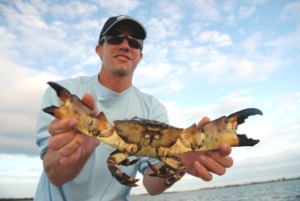 According to the Florida Fish and Wildlife Conservation Commission, nearly all stone crabs will survive if they are declawed properly. Now you’d think it would be impossible for the crab to eat and avoid being eaten if it loses both claws. But that’s not the case. Stone crabs simply change their behavior from predator to scavenger. They rely more on concealment and scavenging rather than foraging in more open areas. Feeding for stone crabs without claws is likely more difficult, particularly if there is competition for resources and to hold territories.
According to the Florida Fish and Wildlife Conservation Commission, nearly all stone crabs will survive if they are declawed properly. Now you’d think it would be impossible for the crab to eat and avoid being eaten if it loses both claws. But that’s not the case. Stone crabs simply change their behavior from predator to scavenger. They rely more on concealment and scavenging rather than foraging in more open areas. Feeding for stone crabs without claws is likely more difficult, particularly if there is competition for resources and to hold territories. 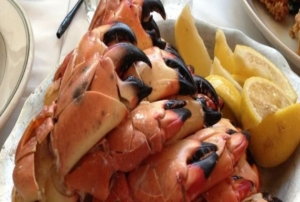 Defense against predators would also be more difficult or require a different strategy. However, their main predator, the octopus, is designed to prey on them whether they have claws or not.
Defense against predators would also be more difficult or require a different strategy. However, their main predator, the octopus, is designed to prey on them whether they have claws or not.
If you’ve never enjoyed stone crab claws, they’re big, meaty and unbelievably delicious. But they’re only available between October 15 and May 15. It’s just another reason why folks who live in Florida wait eagerly for tourist season 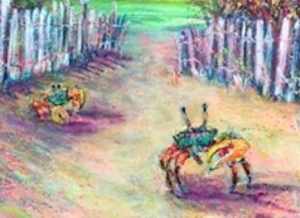 each year.
each year.
But you don’t have to wait until winter to visit us on Matlacha Island. The art here is always hot and enticing, and there’s plenty of other fresh seafood to please even the most discriminating palette.
Call us at 239-938-5655 for hours and availability.
